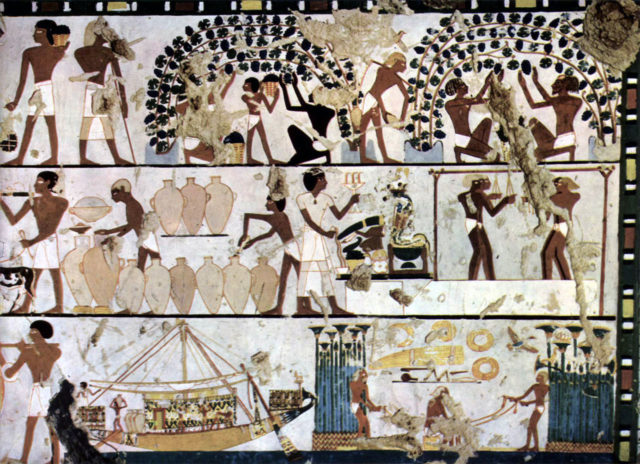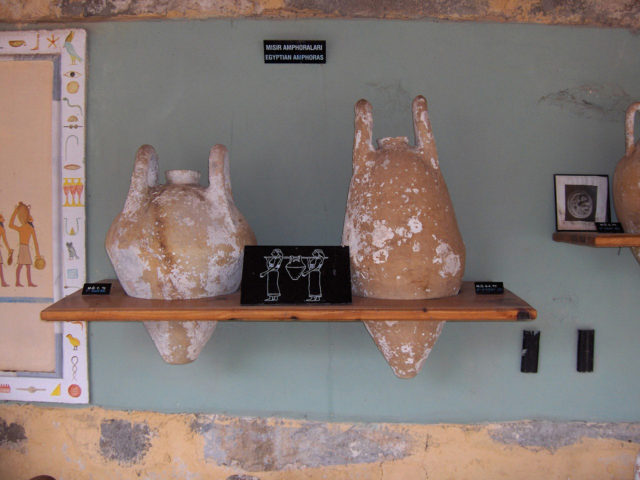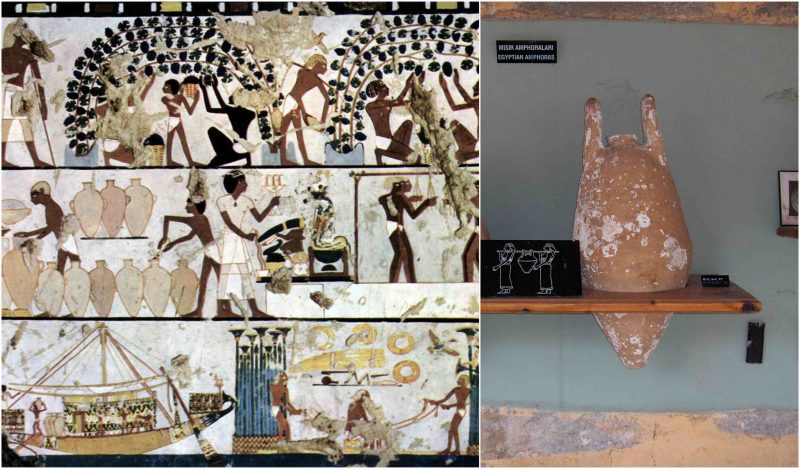In Ancient Egypt, wine played an important role in ceremonial life. Following the introduction of grape cultivation in 3000 BC, a thriving royal winemaking industry was established in the Nile Delta.
It is suggested that this industry was a result of the trade between Canaan and Egypt during the early Bronze Age.

Tomb walls dating to the Old Kingdom period depict winemaking scenes and the offering lists that accompanied them, including wine produced in the delta vineyard. Five distinct wines all produced in the Delta constituted a canonical set of provisions for the afterlife.
In Ancient Egypt, wine was mainly red and it resembled the color of blood. This resemblance was the reason for many superstitions related to wine-drinking in Egyptian culture.
It is said that pharaohs refused to drink red wine nor offer it to the gods, claiming it to be “the blood of those who had once battled against the gods and from whom, when they had fallen and had become commingled with the earth, they believed vines to have sprung.” This was considered to be the reason why drunkenness “drives men out of their senses and crazes them, inasmuch as they are then filled with the blood of their forbears.”
The most cherished drink in ancient Egypt was called Shedeh. It was previously thought that Shedeh was a sort of wine fermented from pomegranates, but it was later discovered that it was made from grapes and it had a red “blood” color.

Six of 36 wine amphorae were excavated in the tomb of King Tut carrying the name “Kha’y”, a royal chief vintner. Five of the clay amphorae discovered in Tutankhamun’s tomb revealed a sediment from white wine, which probably was available to the ancient Egyptians through trade, but some suggest that it might also have been produced domestically.
